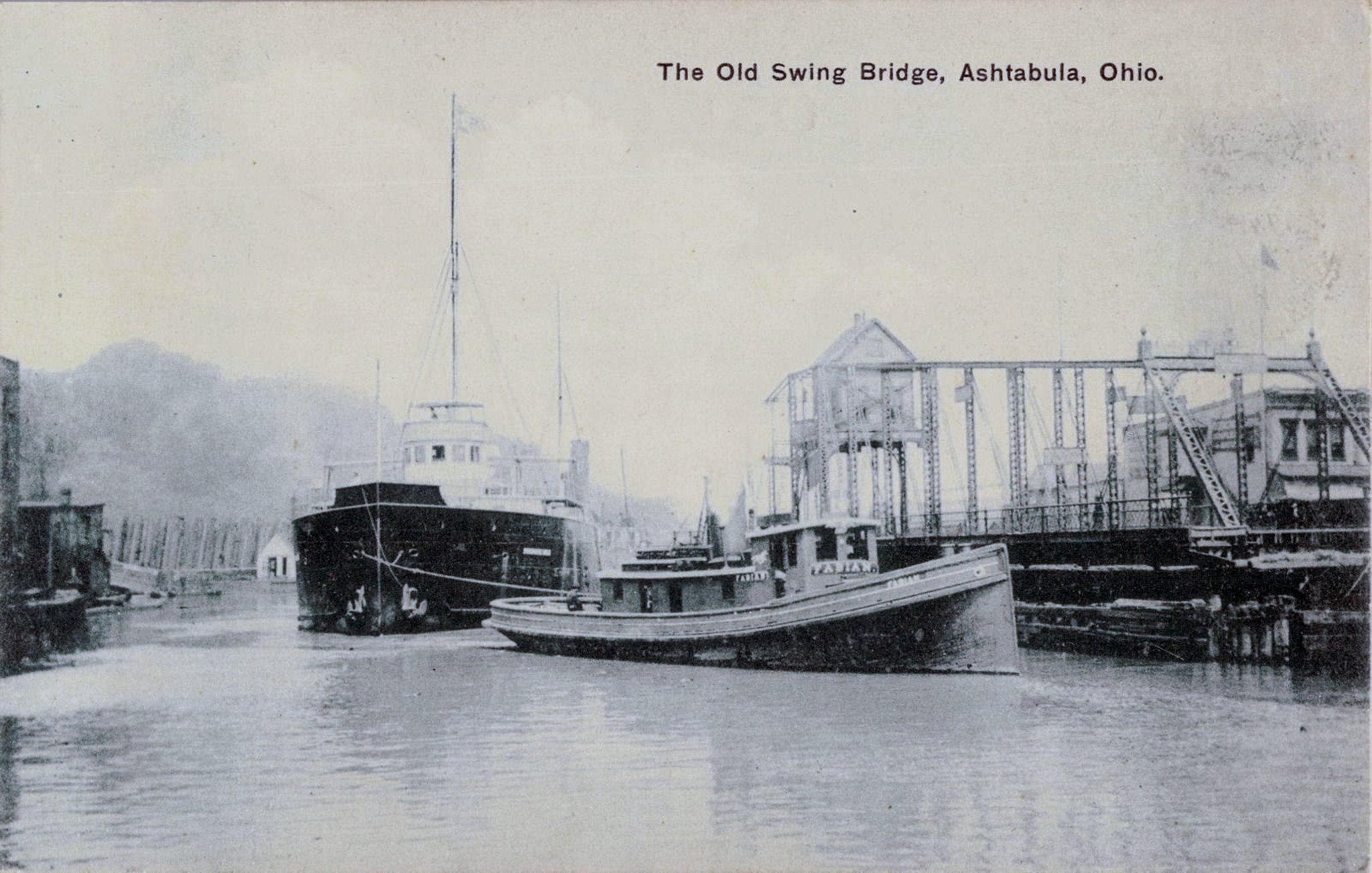Historic Ashtabula Harbor History
Once the Ashtabula railroad was finished in 1873, the Historic Ashtabula harbor became a direct route to ship iron ore to the booming steel mills of Youngstown and Pittsburgh, even surpassing Cleveland as one of the busiest ore receiving ports on the Great Lakes. Dubbed “one of the toughest ports in the world” alongside Shanghai and Calcutta, the use of machines in the early 1900’s drastically accelerated the dock unloading process, and by the late 20th century, ships docked in the harbor essentially unloaded themselves.
Designated in 1975 and listed on the National Register of Historic Places, the Ashtabula Harbor Commercial District, known as the Historic Ashtabula Harbor, includes buildings constructed largely in the late nineteenth century (between 1865 and 1878), and covers both sides of West 5th Street from the 1200 block to the Ashtabula River in Ashtabula, Ohio. Building designs include examples of the Italianate, Queen Anne, and Neoclassical styles, while the construction materials are primarily brick with occasional frame structures due to a series of fires that claimed many of the wood-framed buildings throughout the area in the late 1800’s. In 2010, the district’s boundaries extended from the river bridge to Lake Avenue, and from Morton Drive along the river, to Walnut Beach Park on the lake.

On the west side of the river, Bridge Street, formerly a brush-filled gulley, got its name because it terminates at a bridge spanning the Ashtabula River. Until it became part of the city of Ashtabula in the 1870s, the Ashtabula Harbor was a separate municipality (it lies two miles north of the city's downtown), and Bridge Street its commercial sector. In 1889, a swing-span bridge replaced the original pontoon bridge over the river. A bascule lift draw bridge replaced the swing bridge in 1925, which is the Strauss Lift Bridge today.
Demand for labor in Ashtabula brought Swedish, Finnish, Irish, Italian and other immigrants to the city. Bridge Street served these and other residents, and the mariene and railroad trade. Businesses on Bridge Street included department stores, barbers, grocers, attorneys, undertakers, and restaurants, as well as pool halls, saloons, and brothels.





